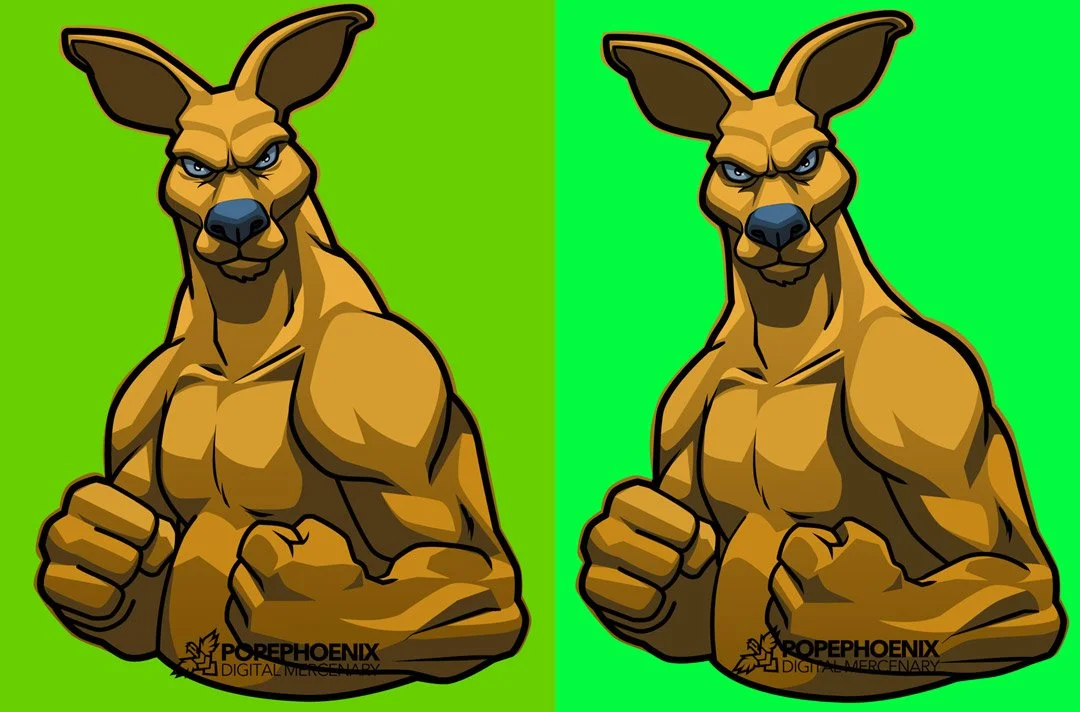What the hell is a combat kangaroo?
Case Study: Combat Kangaroo
Project Type: Modular Character Design System
Role: Lead Designer / Art Direction / System Builder
I’ve always loved modular character design — though I didn’t realize how much until a game studio reached out to have me build one from scratch.
Digging through my archives, I noticed a pattern: avatar systems, mascots, NFT projects — all requiring flexible, scalable design frameworks. Each pushed me to refine how I build characters that aren’t just visually appealing but systemically sound.
“Every project forced me to rethink what a modular system could do.”
The Project: Combat Kangaroos
During the NFT boom — yes, back when we were still disinfecting our mail — I was approached by several teams looking for their own Bored Apes-style collection. Most wanted clones. I wasn’t interested.
Then came Combat Kangaroos.
Beneath its absurd premise — radioactive kangaroos battling in an underground fight club — was an opportunity to create something that felt original, confident, and fun. My goal: design characters with enough attitude and charm to make people care about a cartoon fighter.
From WWE to UFC
The first version was too bulky, reading more like a wrestler. The final design leaned toward a UFC-style fighter — agile, defined, and ready to brawl. He needed lose some muscle and slim down. We got there but it really came down to my vision versus the clients.
“The base character is everything. Get it wrong early, and you’re building yourself into a production nightmare.”
The base isn’t always visible in key art, but it’s the structure that determines whether everything else aligns. If proportions or anchors are off, every accessory and expression breaks down later.
Building the Modular System
Once the base was locked, it was time to make the system sing.
Over several weeks, I built 72 unique assets across seven categories — ears, eyes, noses, shirts, hats, and more — designed to combine seamlessly into thousands of potential characters.
Organization and layering were key. Each element needed exact stacking logic: which assets sit above or below others, how shadows interact, and how lighting remains consistent across combinations.
Technical Insight:
Creating shadows using Multiply blending modes in Affinity for setup.
Final PNG exports shadows need lowered opacity for cross-compatibility.
Layer naming followed a strict taxonomy for automated batch generation.
The Final System
After rounds of iteration and refinement, the system reached full speed — producing new characters in minutes instead of hours.
What began as chaos became a streamlined, repeatable process that balanced aesthetics, flexibility, and efficiency.
Lessons and Next Steps
This project became a masterclass in modular thinking — balancing art, logic, and scalability. I’m now channeling what I learned into a new portrait system that can produce a broader range of styles even faster.
“It’s not just about making one good design — it’s about designing the system that can make a thousand.”
Call to Action (CTA):
Sign up for my newsletter to see how the next generation of this system develops.










